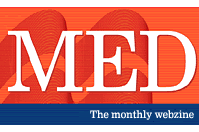 |
 |
 |
 |
 |
 |
|
|
|||
|
FEATURE |
Have you ever been baffled by terms such as bling or buttmunch, chuffie or chuddies, daggy or diss? Ever wondered exactly what a chav is, or why it is considered so undesirable to be one? Ever wondered, indeed, just what slang is, how it comes into being and what happens to it when it stops being slang? The answers to all these questions and more can be found in the latest edition of the Dictionary of Contemporary Slang by Tony Thorne. Many dictionaries of slang are weighty volumes that include thousands of obscure and obsolete expressions. They have their own fascination, but are of little use when it comes to present-day English. This one is different. Of modest dimensions and just under 500 pages long, it confines itself to slang that has been used since the 1950s, right up to the present day. It lists more than 15,000 definitions for over 6,000 terms, organised alphabetically, and includes around 2,000 new terms that have been added since the previous edition. The author, who is Director of the Language Centre and slang archive at King's College London, has gone to great lengths to obtain authentic material. Acknowledging the difficulty of pinning down language whose whole purpose is to bind group members together and exclude outsiders, he has drawn on self-reporting by slang users, interviews, and taped conversations with volunteers, as well as written and oral sources such as magazines, newspapers, websites, film, pop music and TV. Many entries are illustrated by recent citations from a range of spoken and written sources. According to the author, slang tends to be generated above all in the following areas: drinking and drug use, terms of approval and enthusiasm, insults and pejorative nicknames, and expressions relating to sex and body parts. The dictionary provides copious examples of terms from all these areas, and from many others as well. Schoolchildren's and student slang are notably well covered; this is the place to find out the meaning and origin of random and rare, skanky and sad. And if you thought rhyming slang was a quaint survival, think again: there are entries not only for such familiar terms such as porkies (pork pies or lies) and whistle (whistle and flute = suit), but also for recent coinages like Ayrton (a tenner, after the racing driver Ayrton Senna); Britneys (Britney Spears = beers) and Claire Rayners (trainers). Another area highlighted as a source of new slang is that of computing, which has given us flub and kludge, blogging and phishing, addy and noob (itself derived from the slang term newbie, meaning a novice, especially on the Internet). This group of words illustrates the difficulty of recording something as deliberately evanescent as slang: with the exception of addy, all these words are listed in the most recent edition of a prominent learner's dictionary, signalling their passage from the underground into the mainstream. No doubt Internet slang has already moved on, coining new terms to baffle outsiders. As well as being a valuable reference work, this book will provide hours of fascinating reading for those who just like to browse. Tony Thorne is proud to follow in the footsteps of the 18th century lexicographer Captain Francis Grose, whose Classical Dictionary of the Vulgar Tongue celebrated "the language of the dissolute and the dispossessed". In codifying the language of individuals and groups who, as he puts it, have little prestige in society as a whole, Tony Thorne has provided 21st century readers who are interested in language with a rich source of entertainment and enlightenment. Dictionary of Contemporary Slang by Tony Thorne published by A&C Black Publishers third edition, 2005 ISBN 0713675047 |
||
|
|
|||